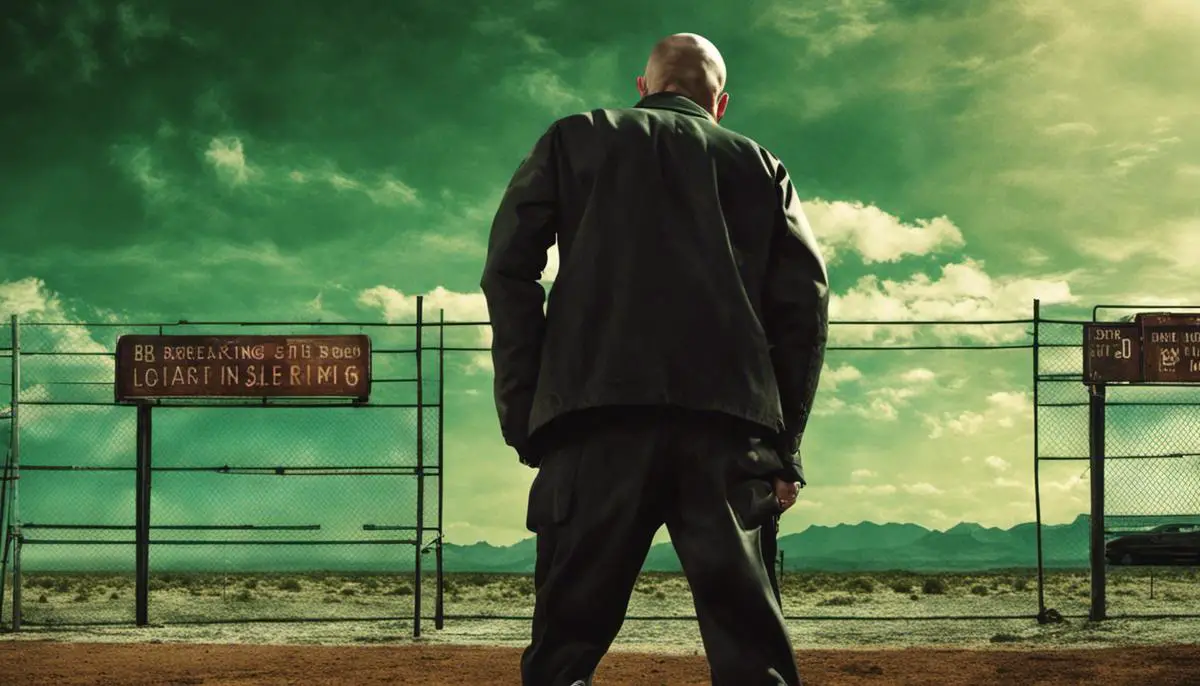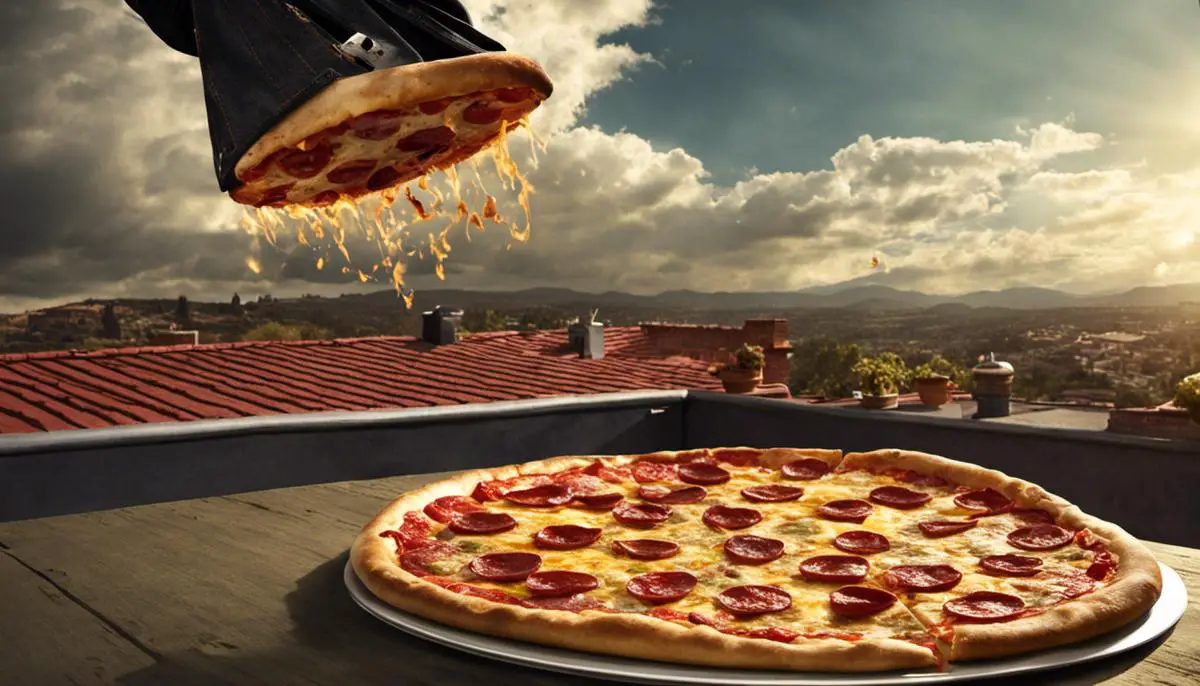There is no denying the monumental impact that the television series ‘Breaking Bad’ has made in the realm of Pop culture. The show, a thrilling tale of a high-school chemistry teacher turned methamphetamine kingpin, is known equally for its storytelling and its unforgettable characters as it is for its attention to detail and symbolism. Undoubtedly, ‘Breaking Bad’ has been a powerhouse of character arcs, plot twists, and artistry, enticing audiences worldwide. This is a presentation of insider snippets about the series, delving into the profound and sometimes surprising aspects of ‘Breaking Bad’, including the intriguing origin of the title, insightful color symbolism, original fate of Jesse Pinkman, the ‘Pizza Toss’ scene and the story behind Bryan Cranston’s ‘Breaking Bad’ tattoo.
‘Breaking Bad’ – The Title’s Origin
The Origins of the Title
When Vince Gilligan first came up with the idea for his groundbreaking TV series, he chose a title that perfectly represented the transformation of his main character – ‘Breaking Bad’. This phrase, rooted in the American Southwest, alludes to someone choosing to disrupt, or ‘raise hell’ in their usually stable and peaceful life. Just like the show’s protagonist, Walter White, who swapped a quiet life as a chemistry teacher for an adrenaline-filled life as a drug lord.
Understanding the Title
In the beginning, when the series was in its initial pitching stage, not many people outside the American Southwest were familiar with the term ‘Breaking Bad’. Viewers, potential producers and even some of the people involved in the show found themselves googling the phrase, seeking to understand its meaning. Such was not just a mere title but a cryptic hint at the premise of the impending series.
Bringing the Meaning to Life
And how fitting the title proved to be! The series chronicles the thrilling journey of ordinary Walter White ‘breaking bad’ on an epic scale – from a humble high school chemistry teacher to the methamphetamine drug kingpin known as Heisenberg. The title, once a puzzling term, came to perfectly embody the spirit and heart of the series, captivating audiences worldwide.
The Impact of the Title
The phrase ‘Breaking Bad’ has since seeped into the cultural and linguistic zeitgeist, becoming so synonymous with the acclaimed show that it’s now instantly recognizable. It’s become a testament to how a well-chosen title can captivate, intrigue, and ultimately define the identity of a show. This tale of the term ‘Breaking Bad’ underscores the value of regional idioms in contributing to the richness of language and storytelling.

The Importance of Colors in Breaking Bad
Color symbolism in Breaking Bad
Color symbolism is one of the unique artistic techniques employed in Breaking Bad. It’s almost like a psychological armor that the characters wear, enhancing the audience’s empathy and understanding of their actions and decisions.
Walter White, for example, dresses in subdued shades in the initial seasons, underscoring his mundane life as a highschool chemistry teacher. As he transitions into the infamous meth cook ‘Heisenberg,’ his wardrobe subtly shifts to darker hues, reflecting his transformation into a dangerous criminal.
The changing attire of Walter and Skyler
Joining his dark descent, Walter’s wife Skyler also exhibits a prominent change in attire. Usually seen wearing shades of blue, an emblem of her innocence and somewhat naive nature – becomes tinged with darkness as she becomes complicit in Walter’s criminal activities. This subtle progression mirrors her internal transformation as she grapples with the moral complexities of their situation.
Manipulation of color in the visual landscape
Moreover, this manipulation of color extends beyond wardrobes to the entire visual landscape. Locations acquire symbolic hues – the soulless sterile whites of the meth lab, the sun-soaked oranges of the desert, or the blue meth itself – a baleful signifier of purity disturbed.
The significance of color in Breaking Bad
In essence, watching Breaking Bad is akin to engaging with a poignant color script. The directors expertly used color to visualize the impending moral and psychological doom. As such, the color spectrum in Breaking Bad becomes an auxiliary means of storytelling, threading raw emotion and depth into the fabric of the characters, further illuminating their compelling transformational narrative.

Jesse Pinkman’s Original Fate
High Stakes on the Breaking Bad Set
Many fans of “Breaking Bad” admire Aaron Paul’s heartfelt portrayal of Jesse Pinkman. Although now considered one of the show’s primary characters, not many people know that Jesse was originally slated to be killed off during the first season. Creator Vince Gilligan had initially written Jesse Pinkman just as a short plot device, a character whose doom was destined from the beginning.
An Unexpected Turn
Paul’s convincing portrayal of a directionless young man stuck in the drug trade won him more than just audience appreciation, though. He also caught the attention of Vince Gilligan, the mastermind behind the acclaimed crime drama. Gilligan was thoroughly impressed with Paul’s skilled acting and his ability to imbue the character of Pinkman with an astonishing variety of emotional layers. Intrigued by the raw talent exhibited by Paul, Gilligan was compelled to reevaluate the future of the character.
A Character Reborn
Rescripting the fate of Jesse Pinkman was a game-changing decision by Gilligan. It was an unexpected plot twist that secured Jesse’s place as a main character and provided an emotional anchoring for the series. The disturbed but the emotionally resonant persona of Pinkman, coupled with his dysfunctional relationship with Walter White, played by Bryan Cranston, helped to bring a unique dynamic to the show. Aaron Paul’s powerful performance, initially meant to be just a fleeting part of the series, thus, ended up becoming an integral part of “Breaking Bad”‘s reputation as one of the best shows of all time. The decision also solidified Aaron Paul’s status in the acting world, earning him three Emmy Awards for Outstanding Supporting Actor in a Drama Series.

The Iconic ‘Pizza Toss’ Scene
A Slice of Television History
The episode “Caballo Sin Nombre” in season 3 of the Breaking Bad Series takes its viewers on a quirky, yet rage-filled adventure when Walter White, portrayed by Bryan Cranston, famously tosses a full-sized pizza onto his roof out of frustration. While this may seem like an odd and unexpected money shot, it soon became one of the most memorable and iconic scenes in television history.
The Right Topping of Skills and Luck
The pizza throw wasn’t simply a brazen display of Walter White’s anger; it was a test of Bryan Cranston’s distinctive acting talent. Cranston had become deeply invested in the character of Walter White but, like any good actor, he knew when to step away from the emotion and focus on the physical aspects required for the scene.
When the Heat is On, The Show Must Go On
The creators of Breaking Bad envisaged the pizza toss just once, raising the stakes for Cranston who had to make the throw perfect in one shot. In preparation, he spent time understanding the weight and balance of the pizza. There were no special effects or post-production edits; the toss we see on the screen was raw and real. And much to everyone’s relief, Cranston got it right at the first take, hence giving birth to one of the most spectacular throws in television history.
Baked to Perfection
Behind the scenes, there was more involved in creating this “cheesy” moment than meets the eye. The crew had to ensure that the pizza used was unsliced – a rare sight in any American pizza outlet. A sliced pizza would have broken apart when airborne and not landed in the way the creators had intended. They wanted a single, solid pizza that would maintain its shape and create the desired visual impact on the roof.
The Toss that Keeps on Giving
Years later, the pizza toss scene is still a hot topic and a huge crowd-favorite, distinguishing Breaking Bad from other TV shows. However, the fandom has a funny way of expressing their love for scenes: In real life, the home in Albuquerque that served as the White family residence has experienced numerous instances of fans reenacting that famous scene by throwing their own pizzas on the roof, much to the chagrin of its real-life occupants who eventually had to construct a fence around the property.
So, while the pizza toss scene serves as a testament to the enduring charm of Breaking Bad, it also stands as a reminder of Bryan Cranston’s chameleonic acting talents. Time and again, Cranston fully embodied Walter White’s chaotic nature, his marriage of deliberate precision and sudden wildness, in scenes that left viewers hooked and hungry for more. This scene, quite simply, is Cranston’s and Breaking Bad’s delicious slice of well-done television history.

Bryan Cranston’s Breaking Bad Tattoo
Elemental Commitment
In a symbol of his undying dedication to his role on the hit series “Breaking Bad,” Bryan Cranston chose to tattoo the show’s iconic logo onto his finger on the last day of filming. A tribute as personal as it was profound, the small marking was a permanent reminder of the extraordinary journey that the actor, and his character Walter White, underwent throughout the series.
Though not normally one to wear his heart on his sleeve – or his finger in this case – Cranston was deeply moved by the metaphorical resonance of his character’s transformation from a humble chemistry teacher to a feared drug lord. Cranston made the decision to get the show’s logo tattooed, a representation of the periodic table symbols “Br Ba”, short for Bromine Barium but also the initials of the show “Breaking Bad”. The series’ alchemical mix of drama, intrigue, and tension was encapsulated within these two letters.
Cranston’s emotional connection to his character and the pivotal experiences he portrayed throughout the five seasons left an indelible mark on him. The tattoo, hardly visible unless you know where to look, remains a private reminder for Cranston of the role that won him critical acclaim and hosannas from viewers alike, and of the thrill of being part of a series that left such a profound impact on television history. His tattoo serves as a permanent memento of the unforgettable time he spent embodying Walter White.

The continued cultural relevance and success of ‘Breaking Bad’ is a testament to its quality and depth. The show’s profound use of color to depict the transformation of characters, the evolution of unexpected favorites like Jesse Pinkman, memorably iconic scenes such as the Pizza Toss, and the palpable love of cast members like Bryan Cranston for the project, articulated through a tattoo, are evidence of the thought and passion that went into creating this masterpiece. As we continue to explore ‘Breaking Bad’, let’s appreciate these intricate details that add more layers to an already complex narrative, bringing us closer to understanding the brilliance behind such an epic tale.

